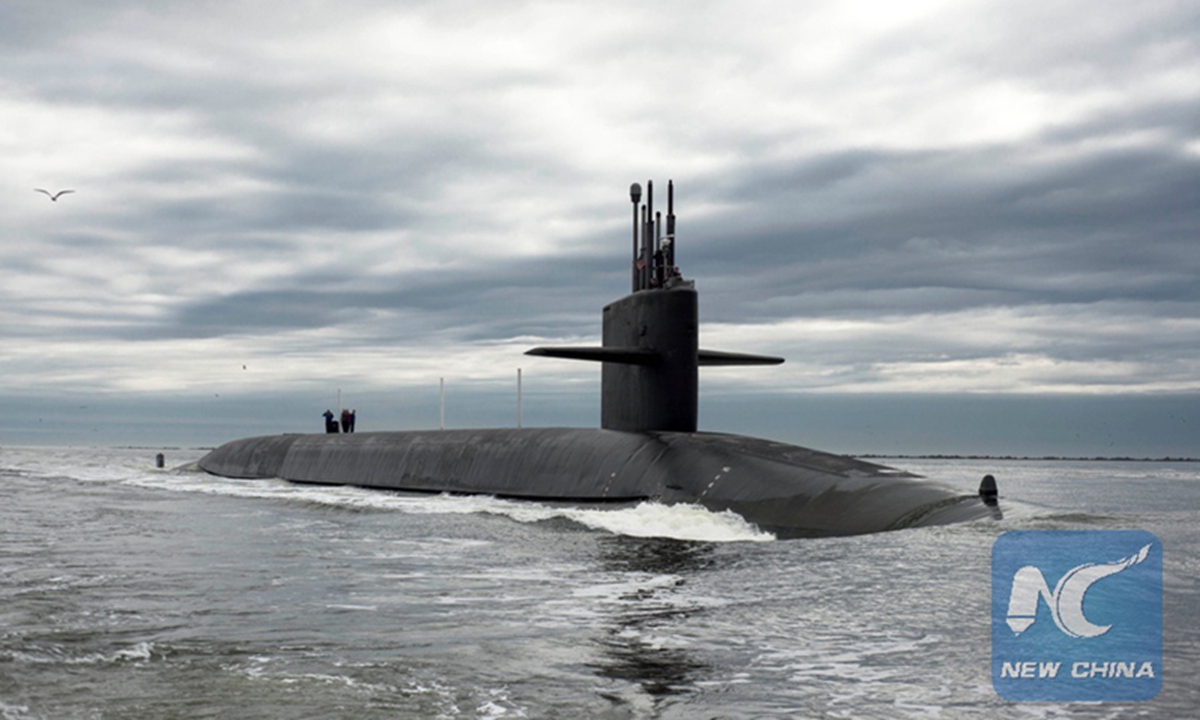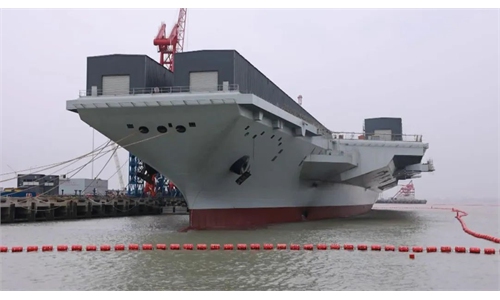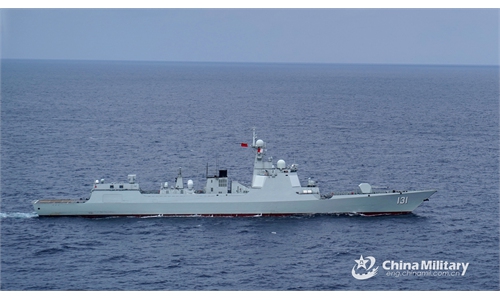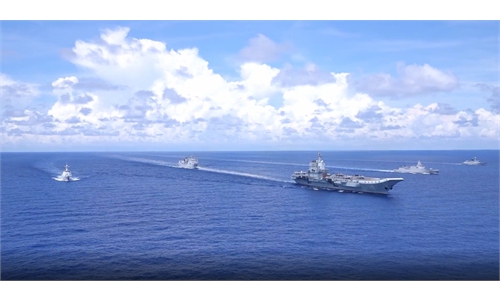China expected to prepare for AUKUS nuclear submarine program with underwater buildups
US, allies build up underwater encirclement against China, ramping up tensions

The Ohio-class ballistic missile submarine USS Tennessee returns to Naval Submarine Base Kings Bay, Georgia, US. Photo: Xinhua
The leaders of Australia, the UK and the US announced details of the AUKUS nuclear-powered submarine program in California on Monday, a move that experts said on Tuesday is a part of a threatening underwater encirclement designed by the US to militarily confront China, and that China will need to prepare to defend itself.
The so-called AUKUS trilateral security partnership and the promotion of cutting-edge military technology cooperation, including nuclear submarines between the three countries, come under a typical Cold War mentality that will only stimulate an arms race, sabotage international nuclear non-proliferation systems and harm regional peace and stability, said Wang Wenbin, a spokesperson for China's Ministry of Foreign Affairs, at a regular press conference on Tuesday in response to the announcement.
The program, widely reported by major media outlets from the three countries, is summarized by analysts as a three-step plan that will first see four submarines from the US and one British sub start rotating through a base in Western Australia from as early as 2027, which will immediately turn the country into a forward deployment base of mainly the US as a part of the latter's attempt to militarily contain China, said Chinese military experts.
For the second phase, Australia will reportedly take three potentially second-hand Virginia-class nuclear-powered attack submarines from the US in the early 2030s with an option to purchase another two, which Australian media claimed is far more than a stopgap measure, as these submarines would be by far the most capable ones the country has ever operated. The US is developing its next-generation SSN(X)-class submarine, so the older Virginia-class boats would be retired anyway if the AUKUS program did not offer them to Australia, observers said.
In the meantime, a new type of submarine known as the AUKUS-class will be developed based on UK work in replacing their Astute-class submarines. The construction of the AUKUS-class is scheduled to start in the early 2040s, and eventually Australia would operate eight AUKUS-class submarines by the 2060s, with the UK also planning to procure the new boats to replace its current ones and potentially add more.
The submarine program will cost Australia between $268 billion and $368 billion over the next 30 years, and the country will also contribute money to US and UK production lines, according to Australian news website abc.net.au.
Under the program, Australia is like a guinea pig that pays money for US interests at own risks, Wei Dongxu, a Beijing-based military expert, told the Global Times on Tuesday.
The US and UK are experimenting with new technologies and concepts in joint submarine development, and they have found Australia is a good test subject, Wei said. In case technological problems arise in the program, the US and the UK could shift the blame between each other, leaving Australia who has paid the money with a bitter pill, he said.
AUKUS ties Australia onto the US chariot of forming an underwater military encirclement against China, even if Australia could have chosen to avoid any military tensions and focus on economic cooperation, another Chinese military expert told the Global Times on Tuesday, requesting anonymity.
The newly announced program is threatening, as the Asia-Pacific region will see a sharp increase in nuclear-powered submarine presence with Australia being used as a US and UK forward deployment base and more boats being built, the expert said.
In the region, Japan has a fleet of capable conventional submarines, while the island of Taiwan is also developing new submarines under foreign assistance, observers said.
To safeguard its sovereignty, security and development interests from these threats, China should build a multidimensional anti-submarine system, Wei said.
This system should include more fixed wing anti-submarine aircraft and anti-submarine helicopters in the air, destroyers and frigates with more advanced sonar devices and anti-submarine weapons, as well as China's own fleet of conventional and nuclear-powered submarines, Wei said.
Frequent hydrological and underwater geological surveys as well as the establishment of underwater sonar arrays should also be parts of the system, said the anonymous expert.
Another aspect of the AUKUS threat is the risk of nuclear proliferation.
Li Chijiang, vice president and secretary-general of the China Arms Control and Disarmament Association, told the Global Times in a previous interview that the AUKUS nuclear-powered submarine program could involve the transfer of tons of weapons-grade nuclear material, enough to manufacture nearly 100 nuclear weapons, marking the first time since the Treaty on the Non-Proliferation of Nuclear Weapons came into force that nuclear-weapon states will transfer a large amount of weapons-grade nuclear materials to a non-nuclear-weapon state.
The AUKUS collaboration will damage the global strategic balance and stability, encourage other countries to join the nuclear arms race, escalate geopolitical tensions and bring the Asia-Pacific region to a wrong path of confrontation and splitting-up, completely opposite to the common appeal for development and prosperity from countries in the region, Li said.




